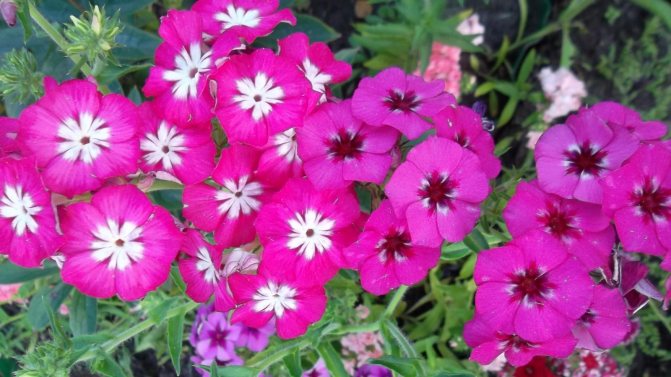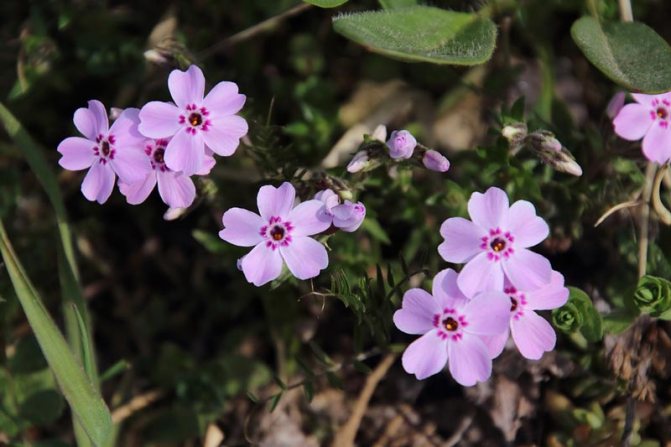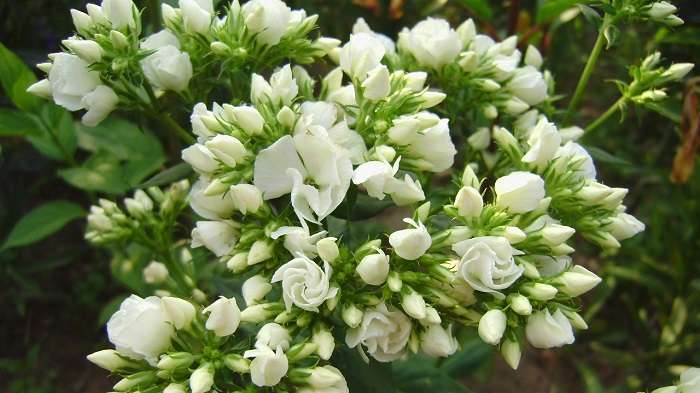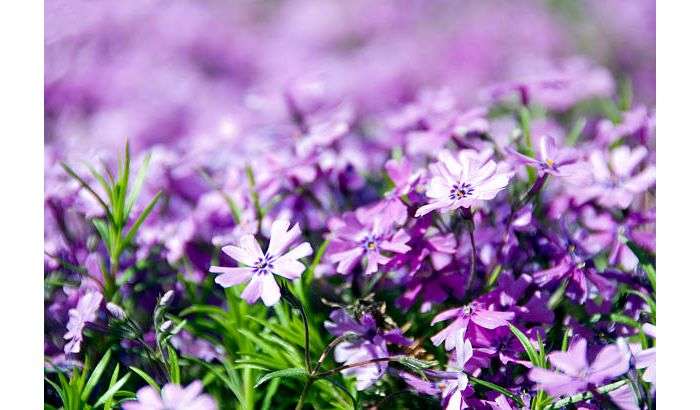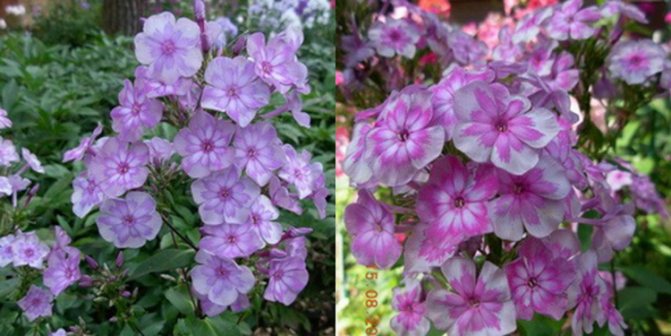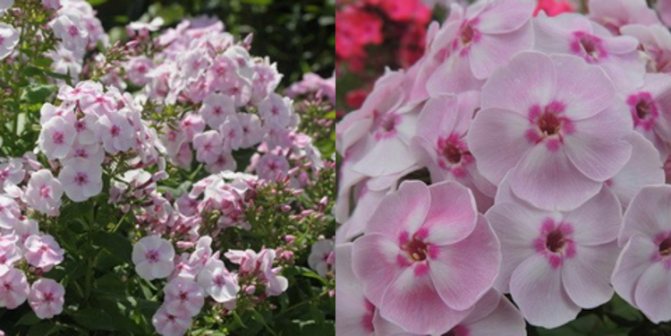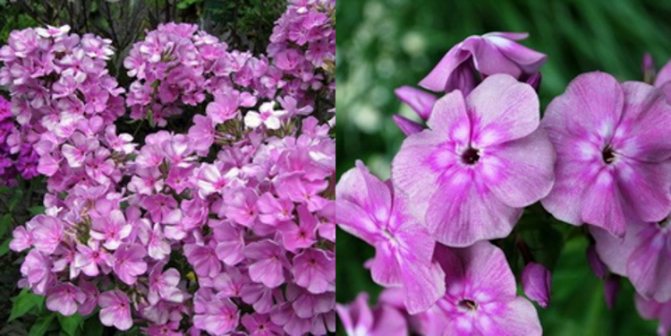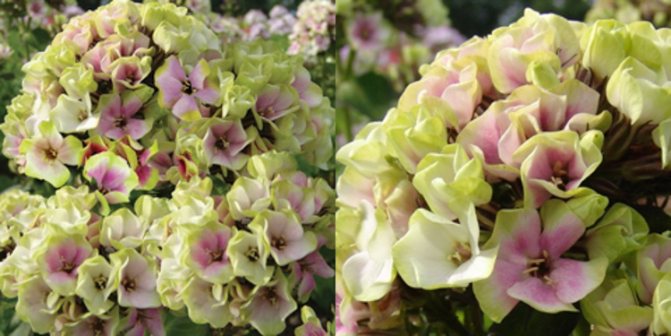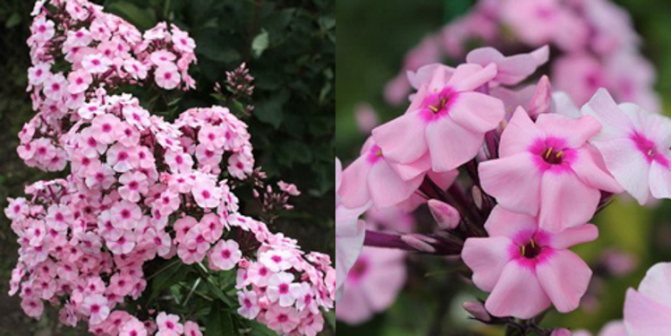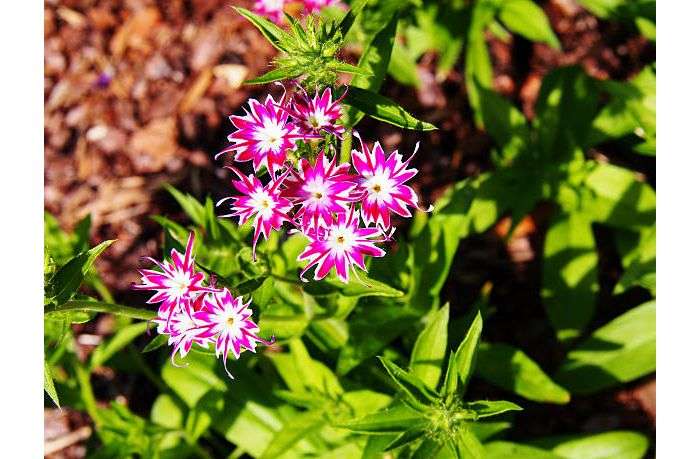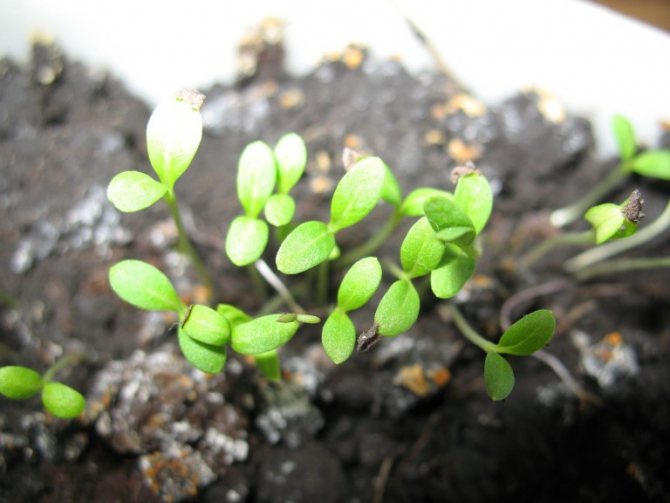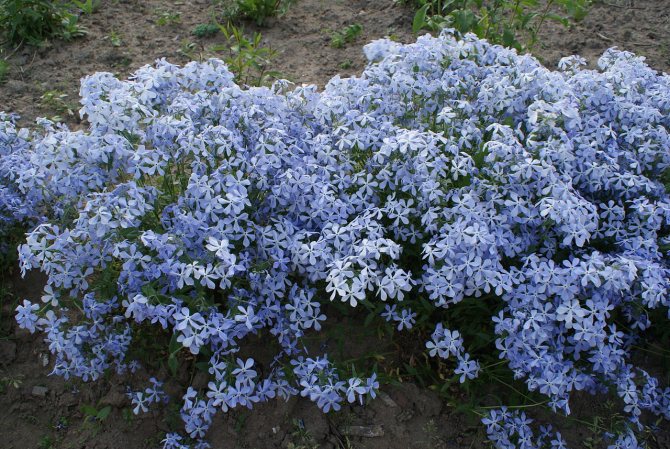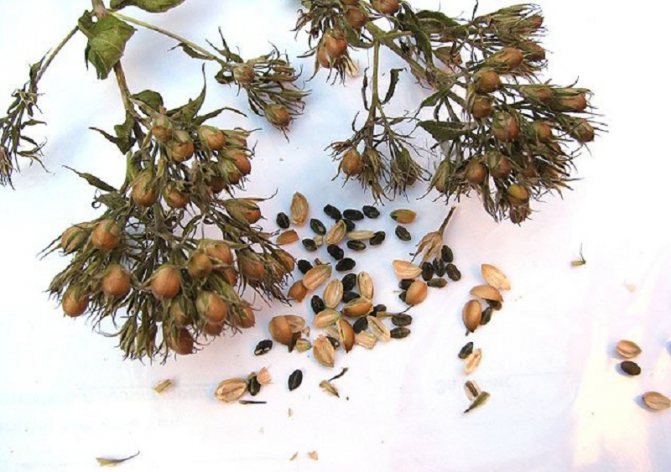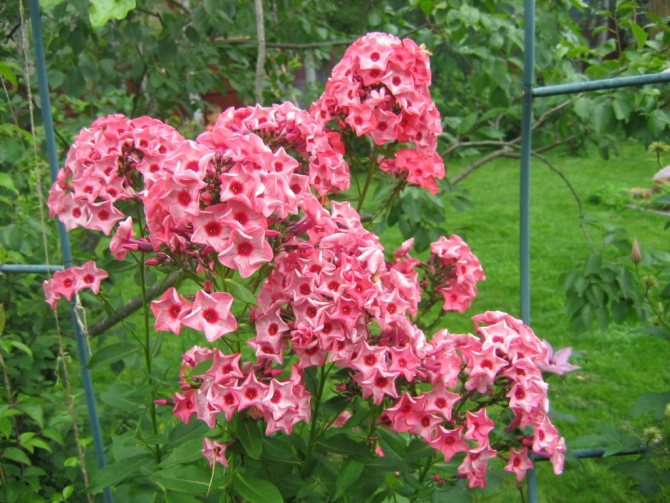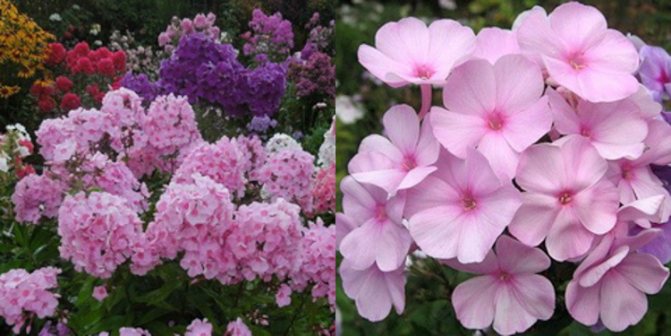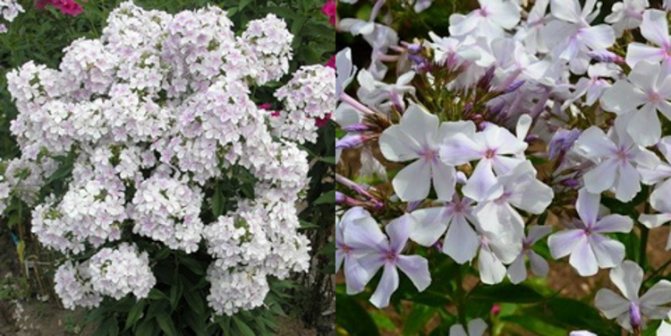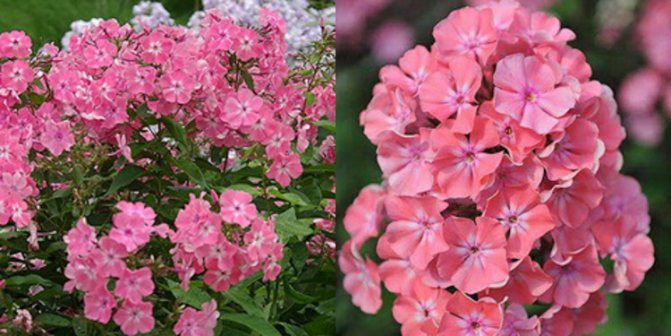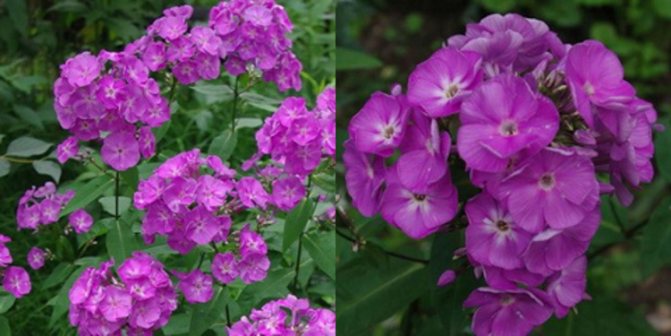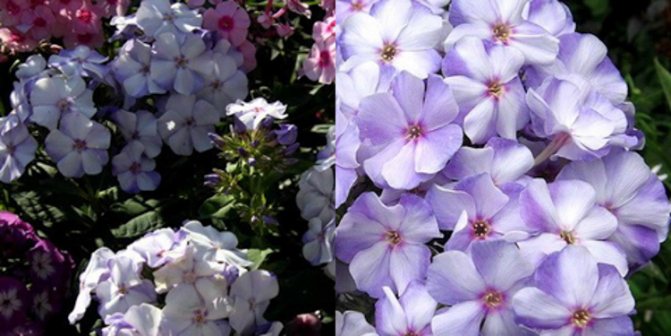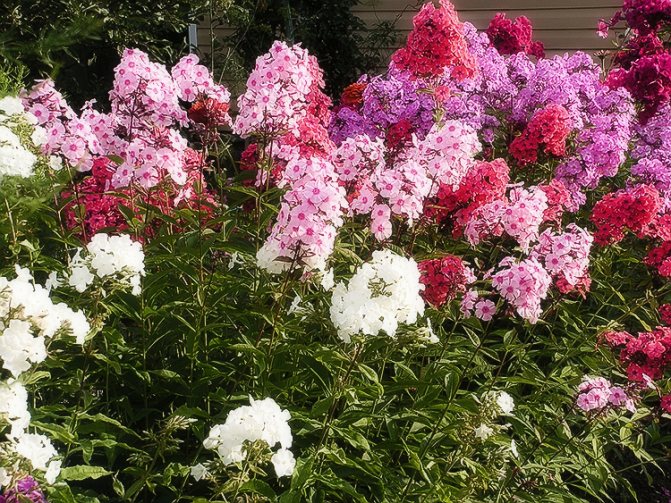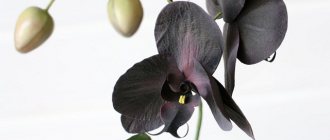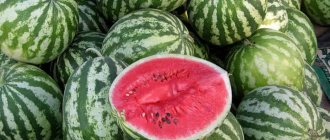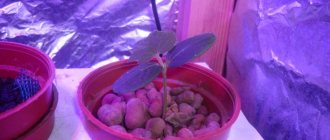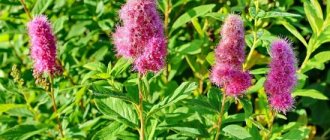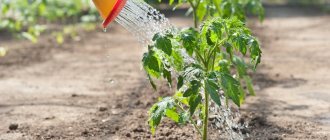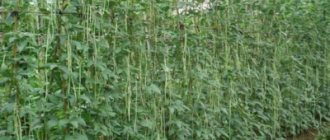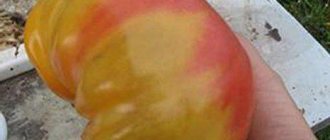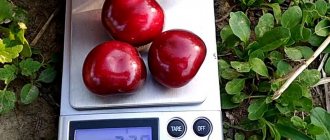The annual flower is called Phlox Drummond. It is a beautiful, elegant and vibrant plant with a pleasant, sweet scent. The flower is able to decorate any area. It is unpretentious, and it doesn't take a lot of effort to grow it and see beautiful blooms. Annual phlox can simply be sown in open ground, but it is much more interesting to start growing a flower crop from seeds through seedlings.
How and when to plant phlox seedlings. How to grow good seedlings of annual phlox from seeds
How to plant phlox seeds for seedlings - the most popular varieties and a detailed description of the process of growing seedlings of annual phlox.
- Annual phloxes are very beautiful, vibrant plants with abundant flowering.
That is why experienced and novice flower growers prefer to grow them in their flower beds.
Due to the many shades, colorful and long flowering, as well as unpretentious care, annual phlox have gained great popularity.
Caring for it is quite simple, and with a competent approach, anyone can grow it, even without experience in gardening.
Annual phloxes are grown in two ways:
- Through seedlings
- Sowing seeds in open ground.
In this article, we will analyze in detail the seedling method - how to plant phlox seeds for seedlings correctly, but for now we suggest that you familiarize yourself with useful information on growing these magnificent flowers, which will definitely come in handy!
How to plant phlox seeds for seedlings?
Many novice gardeners are interested in how to grow phlox seedlings so that the plant turns out to be strong enough and bloom for a long time.
So, let's take a look at the main points:
- When to plant phlox seeds for seedlings?
It is best to start sowing around mid-March (March 13 -18), and the very first shoots can be observed after 7 days.
- Checking seeds for germination and de-freezing
Before planting seeds, you need to sort them and test for germination.
You need to leave only full-fledged and large ones.
To check their germination, sorting is carried out in a strong solution of potassium permanganate, to which you need to add a little table salt.
This will further achieve decontamination.
Seeds should be poured into the prepared solution in small portions, mixing thoroughly, and then kept for 10-15 minutes.
The seeds that have floated to the surface must be removed, and those that settle to the bottom - strain through a cloth or sieve, then rinse 2 times in water and dry, sprinkling with a thin layer on paper.
- Soil for growing phlox seedlings
The quality and composition of the land used is very important.
It is important that the soil is loose, with a low level of acidity, medium loamy.
For about 2-3 days, you need to slightly moisten the soil and keep it constantly moist.
Since phloxes have a fairly powerful rhizome, you need to choose a sufficiently deep container for growing seedlings.
- When do phlox seedlings dive?
As soon as 4 strong leaves appear on growth, they need to be dived.
With the onset of warmth (in April), the box needs to be exposed outside for several hours (so that the flower gets used to it and gets stronger).
- When to plant phlox seedlings in the ground?
This is done in the second decade of May in a previously prepared flower bed.
After the sprouts are planted, they need to take root and then fertilizer can be applied.
Such a simple method of sowing seeds and germinating seedlings gives very good results, as the plants grow strong and you can achieve very beautiful, long-lasting flowering that will be mesmerizing.
- How to plant seeds in the ground
When sowing seeds, certain rules must be followed:
- spread them out on the surface of the earth;
- water using a spray bottle;
- put glass or stretch the film;
- put in a well-lit room;
- remove film or glass every morning to eliminate condensation.
The first watering after planting the seeds should be done every other day.
When growing, it is very important to ensure the greenhouse effect.
The room temperature must be at least 20 degrees, and high humidity is also required.
It is best to place containers with slightly grown seedlings on the windowsill, since there is a lot of light there.
It is quite simple to take care of the plant, the most important thing is to make sure that the earth does not dry out, in moderation, but regularly water it, and you also need to periodically apply organic fertilizers.
Phlox in landscape design
Phlox are versatile plants. They have long gone beyond the grandmother's village front garden. Phlox can beautify modern gardens of almost any style, from country to regular. The use of phlox flowers in garden design is possible in an ordinary flower bed, in a mixborder, and in a flower garden bordering the path, and as an array on a lawn. Although when choosing phlox, few people manage to foresee all the details and not be mistaken, some points should still be borne in mind. A large blooming ball decorating the courtyard can be obtained by planting phloxes in pots or buckets, and placing them side by side. With proper care and cultivation, it will be possible to admire its flowering throughout the warm season.
When to plant phlox for seedlings 2020. Description of phlox
Phloxes belong to the Sinyukhov family. Among the annual crops, there is only one species called Drummond. It is distinguished by a variety of flower structures and colors. Plants of this variety are low - about 20 cm. Small oval-lanceolate leaves are located oppositely on strongly branched stems. The inflorescences of the plant are presented in the form of umbrellas or shields, the shape of the flowers resembles stars, snowflakes. Their diameter is no more than 2 cm. The color of annual phloxes varies from white to chocolate. A distinctive feature is the presence of a strong aroma. Some gardeners prefer the cultivation of semi-shrub-type varieties, which can grow up to 150 cm in height.
The height of the same variety of annual phlox varies, depending on the landing site: no more than 20 cm - on hills and up to 1 m - on a lighted flat place.
North America is considered the birthplace of phloxes, but they feel very comfortable in the climatic conditions of Russia. Flowering lasts from mid-June to the first autumn frosts.
The most popular are several varieties of annual phlox.
The variety is distinguished by the density of buds, shades from creamy to bright red. Suitable for growing on loggias, balconies, in flower pots.
Lush bushes with fragrant flowers. The plant is capable of branching when grown. Suitable for cutting, decorating flower beds, balconies.
The variety has strong, large shoots about 30 cm high, flowers of bright red shades with a star-shaped eye.
An annual bush-shaped phlox, reaching a height of about 30 cm. Its flowers are of an unusual shape, the petals are pointed.
Resistant to dry weather and a temporary drop in temperature, the plant of this variety has the shape of a bush 50 cm high. Its branches are straight, the inflorescences are in the form of brushes with flowers in the form of stars. The culture has a strong flavor. Annual phlox is not suitable for growing in the shade.
Represents a group of varieties related to tall plants with large flowers (up to 5 cm in diameter). The flower is distinguished by a variety of colors and shades.
Botanical description of the flower
Phlox are beautifully flowering herbaceous plants. They are divided into annuals and perennials. Stems are straight, stretching up, or creeping. The height of the plants, depending on the variety, is more than 110 cm. The leaves are elongated oval, bright green in color.
The flowers are presented in the form of a tube and a funnel composed of five petals. The fruit is represented by an oval-shaped box, in perennial varieties the number of seeds is more than 60 pieces, in annual varieties the number of seeds is more than 120 pieces.
How to pinch annual phlox. Do I need to pinch annual phlox?
Phlox are perennial plants, but there is one representative, according to the type of subspecies of this family, which is called Drummond phlox. This phlox plant just fades in one season, therefore it is considered an annual.
There is a special complex of care for annual phloxes, which is slightly different from the usual one, because you need to have time to accommodate all self-care procedures in one season.
Growing annual phlox is a simple matter that repeats itself like a certain cycle: planting, growing, flowering. You can plant annual phlox in two ways: directly with seeds in the soil mixture, or germinate these seeds for a start, and then plant seedlings, which will turn out into open ground. All the characteristics of growing phlox indicate that this plant loves well-lit areas, fertile soils, which means that everything that is aimed at developing and improving the well-being of phlox is good.
Considering this point, it is worth paying attention to whether it is worth pinching phlox when they grow and form leaves. Is it that good for the plant, is it right for him? Usually, to activate the rapid growth of plants, they are either transplanted or pruned. Annual phloxes absolutely cannot survive the transplant, they are much better off if they manage with them with some easy means. Pinching is an easy and less traumatic way for the plant to make the flowering lush and extensive. Phlox is not pinched immediately, but as the plant grows. As soon as the first small leaves are formed on it, and there should be at least five or six of them, take the ones that are closest, and then pinch them together with your fingers gently so as not to tear off. Do a similar procedure with several leaves on the crown, but not in such a way as to grab everything and use it, but so that about half is involved, and half remains at the will of the phlox itself for development.

There is also the practice in the open field of pinching several leaves from different plants, but this is possible if the plants are planted very densely. There is an interchange of useful properties, and there is also supposedly a possibility that the plant from this will only be more magnificent. But still, most people practice precisely the technique of pinching annual phloxes on one plant, without jumping over and without moving to neighboring ones.
After pinching, let the care be the same as in normal conditions for phlox: standard watering, fertilizing the soil so that it remains nutritious and always saturates the phlox, throughout the entire flowering period of phlox, until they bloom.To help nutrients pass through the potting mix much better, loosen it regularly around the plant without touching the potting mix next to the plant itself, as you risk slightly damaging it. The temperature in spring and summer will be quite appropriate, so there is no need to take any additional measures for the care of annual phlox, in contrast to perennial phlox.
Care and growing tips
Annuals and perennials do not require special care conditions. But it is still recommended:
- planting plants in soil with neutral acidity;
- ensure timely watering;
- quite often, up to 6 times per season, fertilize with nitrogen, potash or organic fertilizers;
- trim off the tops after the second flowering for a lush bush.
Observing not difficult conditions of detention, you can get strong, cold-resistant seedlings, which in the future will also give gorgeous results.
Phlox seeds for seedlings. Growing by seeds for seedlings
Annual and perennial phlox, planting with seeds of which is quite common, germinate well if they are not deeply buried in the soil. This must be borne in mind, since otherwise the seeds may not sprout or the seedlings will have to wait long enough, two to three weeks, and they will be uncooperative (with shallow sowing, the seeds usually germinate after 7 days). The simplest way is this: seeds are scattered over the soil surface in plastic containers, watered with a sprayer and covered with transparent film on top. This is usually done in March. Holes must be made from the bottom of the containers in order to prevent stagnation of water, which is fatal for the seeds. It is better to use special soil for seedlings. Its layer should not be too deep. It is advisable to spill it with a weak solution of potassium permanganate five days before planting, and pre-pour it with a solution of phytosporin the day before planting. Seeds should be ventilated daily by opening them and shaking off condensation from the film.
The sprouts dive after the appearance of two leaves. Seedlings, as a rule, tolerate picking normally. It is only recommended to protect them from direct sunlight for the first two to three days to avoid burns of delicate leaves. Florists recommend covering the seedlings from above with newspapers or an opaque film. Phlox grown by seeds for seedlings are planted in the ground at the end of May, best of all - at a distance of at least 20 cm from each other. It will be useful to mulch the soil between young plants for better moisture retention. Periodically, once a month, they should be fed with a complex mineral fertilizer. In addition, further care, as in the case of other garden flowers, includes loosening, weeding and regular watering.
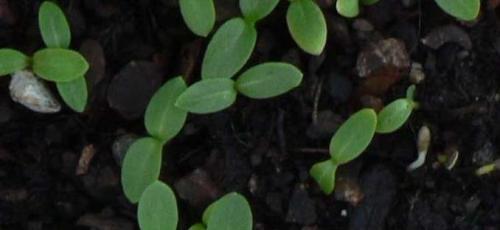

Annual phlox can be sown with seeds in spring and directly into the ground, but with this method, their germination rate will be low. In addition, it should be borne in mind that they bloom only two months after planting. Therefore, growing from seed for seedlings is preferable in this case.
Planting seedlings in open ground
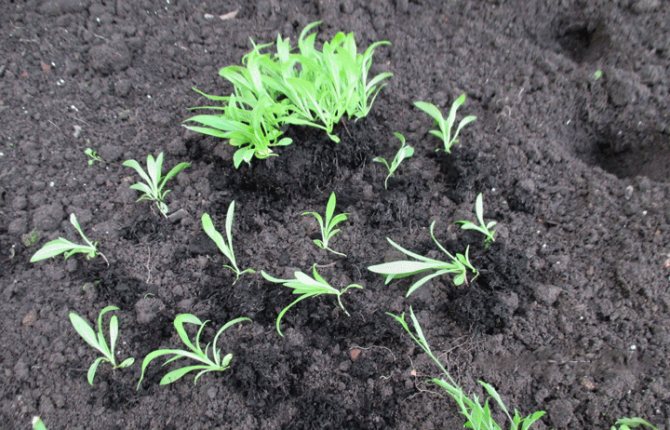

When the seedlings have 5-6 leaves, and there will be no more frosts on the street, it is time to transplant the seedlings into the garden. Plants can be reloaded at any time of the day, subject to certain conditions. The landing site should be prepared in a week.
Seat selection
To grow phlox, you need loose, fertile soil with good organic matter. The place is chosen illuminated, with shade during the hottest hours or partial shade.
The flower loves moisture, but does not tolerate stagnant water. The roots are thin and branched, the bulk is at a depth of up to 15 cm, grow in depth up to 22 cm. The optimum height of the beds is 10-15 cm, they will provide the necessary, but not fatal level of humidity.
Phloxes do not plant close to trees and shrubs with a developed root system.The flower does not have enough light, moisture, it will have to compete for food.
Soil preparation
The selected place is dug up a week before disembarkation, the earth is loosened. The holes are dug at a distance of 20 cm. Before planting in the holes, it is advisable to add a mixture of humus, sand and complex mineral fertilizer.
Transshipment
Flowers in pots are watered 2 hours before transshipment. Together with an earthen clod, they are transferred to the hole, watered again abundantly. Then they cover it with earth, water it again. To prevent the soil from drying out, you can pour a thin layer of humus, this will make it easier for the gardener to weed.
How to collect phlox seeds. Growing from seeds
Experienced gardeners recommend growing phlox from seed. They argue this opinion by the fact that a self-formed plant is stronger, adapts better and does not inherit the diseases of the mother bush.
Important. Attention should be paid to the fact that seeds lose germination during long and improper storage. Therefore, they must first be checked for germination, using the stratification method. Simply put, germinate.
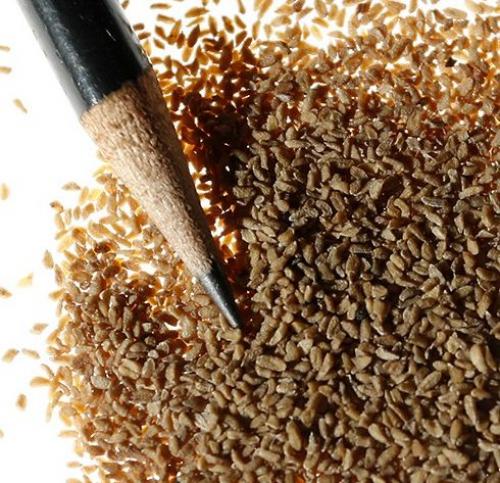

Seeds of phlox subulate.
How to germinate seeds?
Sowing seeds for germination can be done using standard methods. Sow them in wet sand and make sure they hatch. Then plant on seedlings or in warm open ground, at the end of May.
Another recommendation: planting seeds for seedlings directly into prepared boxes to a depth of 2 cm. Water the seedlings with a sprayer so as not to wash them. After 2, 3 weeks, seedlings are dived and the first feeding is done (with nitrogenous fertilizers).
How to sow seeds?
Note the "Perennial Blend" of phlox seeds from. Plasma treatment stimulates plant growth and development. The flower blooms ahead of time.
Sprouted seeds can be planted in warm soil in May, directly into the ground (up to 2 cm deep). At first, until sprouts appear, they are covered with a film. Then it is removed. Flowering will begin during the planting season, but later.
There is a way to plant seeds in the winter. This is where opinions differ. Some argue that early sprouts can die prematurely from the cold. Others, on the contrary, say that such a planting hardens the plants.
Our advice. In the case when you have your own seed material from mother bushes that have adapted to the climate, you can plant it in the winter. If these are purchased seeds that have not previously grown in your phlox varieties, then it is better to germinate them and plant them on seedlings. Plants have memory, so they respond to different growing climates.
Flower bed care
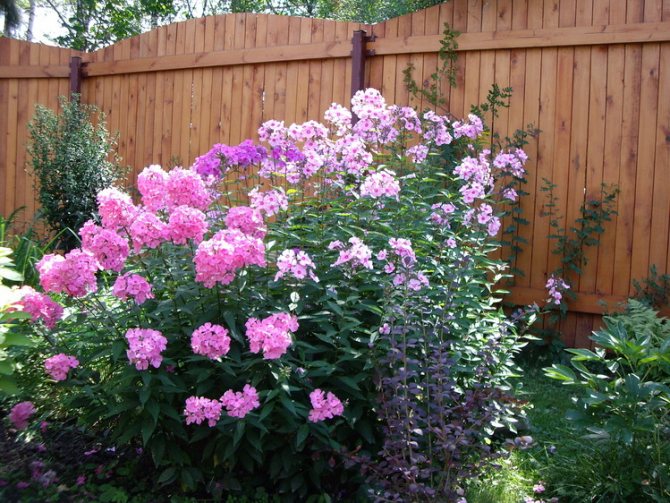

Phloxes have great vitality, so they are considered unpretentious. Summer care is not difficult, but flowers cannot do without it. Taking care of them includes:
- Watering: complete drying out of the soil or stagnant water is unacceptable;
- Mulching: keeps the soil moist;
- Topping;
- Top dressing;
- Protection against parasites and diseases;
- Removing old buds: will bloom longer;
- Shading in drought;
- Timely transplantation of perennial species;
Top dressing of flower beds
Fresh manure and nitrogen fertilization stimulate leaf growth and are only desirable in the early stages. They are fed at planting, before and after flowering, perennials - additionally in autumn. To obtain a lush flower bed, top dressing is applied every two weeks.
Why phloxes don't bloom
There are four main reasons why phlox does not bloom:
- Not enough light;
- No feeding was done;
- Poorly mulched soil;
- Lack or stagnant water;
Phlox varieties. Phlox perennial and annual
Phlox are flowering herbaceous plants belonging to the Sinyukhovye family. Distribution area - northern regions of America, Russia.
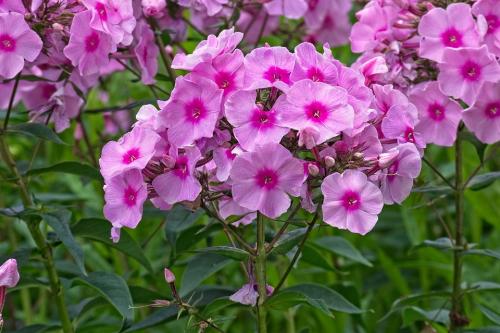

Phloxes from the same species may vary as they are influenced by climatic conditions. For example, alpine ones grow from 5 to 25 cm, bryophytes. Their trunks are branching, covered with evergreen foliage.In a favorable climate, the stem of the phlox becomes straight, the height is from 30 cm to 1.8 m.The leaves are opposite, the shape is elongated-ovate or lanceolate-oval. The diameter of the buds is 25-40 mm, tubular-funnel-shaped.
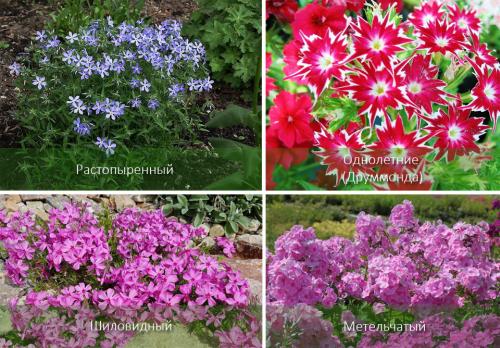

Most species are perennials, but Drummond's phlox and varieties are annuals.
Phlox subulate, paniculate, spread wide and annual: description
There are several dozen varieties of phlox, but they are all divided into 4 separate groups:
| Description | Features of the | Using | |
| Subulate | Perennial, stem reaches 20 cm. Narrow needle-like foliage, length - up to 20 mm. Color - green (almost until the first frost). The buds are blue, purple, crimson. The flowering period is from late spring to July. | Stunted and ground cover species | They decorate alpine slides and create compositions in rockeries. |
| Spread out | The trunk is 20 to 40 cm high. The flowers are small, the edges are wide, narrowed towards the center. Colors - from white to purple. The foliage is elongated (up to 50 mm in length), tough. Duration of flowering - May-June. | The most unpretentious among all varieties of phlox. Has a rich pleasant aroma. | In the landscape sphere. |
| Paniculate | It grows from 40 cm to 1.5 m. The foliage is lanceolate, elongated, up to 6-15 cm long. The trunk is erect. Inflorescences are spherical. Bloom - from mid-summer to September. | The most popular. It has a large variety of varieties with different colors. | For decorating home gardens. |
| Annuals (Drummond) | Stem up to 30 cm. The petals have slightly pointed tips. The duration of flowering is from June to the first frost. | Grown exclusively from seeds. There is a delicate scent. | In rockeries and alpine hills, flower beds are decorated. |
Phlox diseases
They are divided into viral and fungal.
Here is a photo of the diseases.
Viral:
- rattle. Light spreading spots on the leaves;
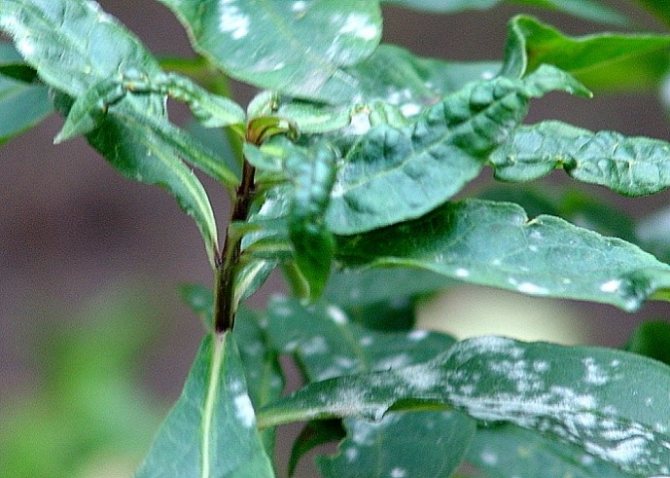

- necrotic spotting. Dark brown spots on the petals;
- ring spot. White spots covering plants deform the leaf shape over time;
- foliage curl. The leaves are covered with tubercles, the stems become brittle.
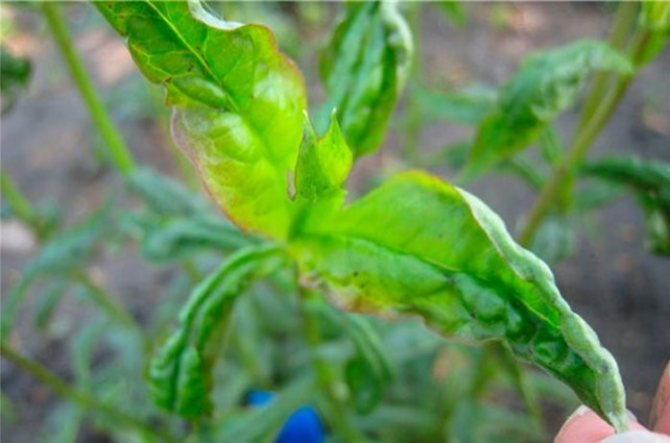

Important. The best way to fight viral diseases is to destroy the bush and treat the area where it grew.
Fungal:
- septiriosis. Leads to the death of leaves, due to the appearance of gray spots. Then the foliage turns yellow and red;
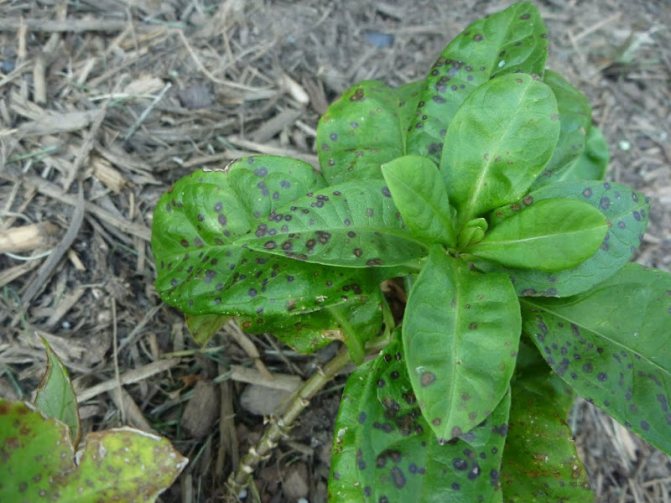

- powdery mildew. Cobweb spots cause leaves to dry out;
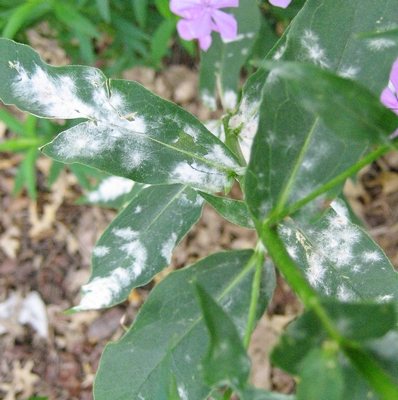

- rust. The emerging and spreading brown spots lead to the death of phlox foliage.
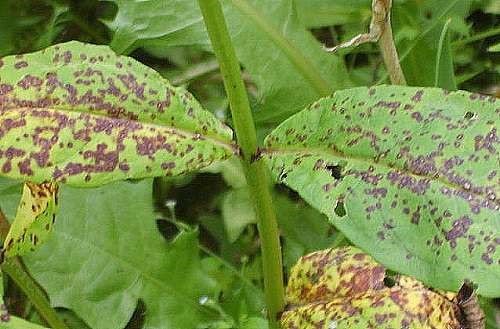

In addition, caterpillars, nematodes, slobbering pennies and other pests threaten.
Important. Timely treatment with complex preparations against pests will prevent diseases. Try to identify and destroy diseased plants in time.
Types, varieties of plants
The main features that significantly distinguish the Drummond varieties:
- Flower shape. It happens star-shaped, wheel-shaped, terry.
- Plant size. There are high - 50 cm and dwarf - less than 20 cm.
Star-shaped plant varieties come in different heights from 12 cm to 40 cm, their distinctive feature is dissected petals that resemble an asterisk. Popular representatives:
- "Star rain" - the bush grows 50 cm high, is drought-resistant, blooms for a long time;
- "Twinkling Star" - a low-growing plant, less than 25 cm, very miniature, can be grown in an apartment;
Terry varieties that grow up to 30 cm in height are very popular. Dense inflorescences consist of double flowers of all kinds of shades. The most popular variety is Promis Pink.
There are tetraploid forms, the flowers of which are much larger than usual (more than 4 cm in diameter). Large-flowered representatives grow up to 30 centimeters. Inflorescences of red shades are especially attractive.Some representatives of large-flowered forms: "Tall bright red", "Tall white".
Popular undersized varieties: "Defiance", "Snow Globe", "Salmona", "Leukantenum".
Notice! All Drummond varieties, except for large-flowered ones, give good self-seeding, germinating next summer.
Diseases and pests (treatment)
All plants are susceptible to diseases and are affected by various pests. One-year phlox is no exception.
Diseases
Fungal diseases: phomosis - the leaves dry out, the stems become brittle. For prevention, the bushes are sprayed with colloidal sulfur in warm weather; septoria - dark spots appear on the leaves, gradually growing. They are treated by spraying the plantings and the earth with Bordeaux liquid, after 15 days, the treatment is repeated; powdery mildew - a flour-like plaque appears on the bushes. Such a plant is dug up and burned, it is impossible to cure it.
Variegatedness. Petals, stems are covered with an ugly pattern. Not subject to treatment. Sick specimens are dug up and burned to prevent infection of the remaining plantings.
Verticillary wilting. The disease destroys the root system. The disease is typical for specimens growing on acidic soils.
Pests
Nematode. A filamentous, very small worm that sucks juice from stems and leaves. In diseased seedlings, the stems become thinner, the inflorescences become smaller. Such a bush is burned. The soil is treated with nematicides three times with an interval of twenty days.
Naked slugs. In the dark, they eat the lower part of the stem, inflorescences, leaves. Dusting the soil with ash, tobacco dust, fluffy lime serves as a prophylaxis and fight against slugs. Systematic loosening of the soil, weeding will also help in the fight against them.
Caterpillars of butterflies. Caterpillars get rid of, collecting them by hand, plantings are treated with special preparations from leaf-gnawing pests.
Important! Many diseases are acquired along with the planting material. Seedlings purchased from the market may be infected with the virus.


